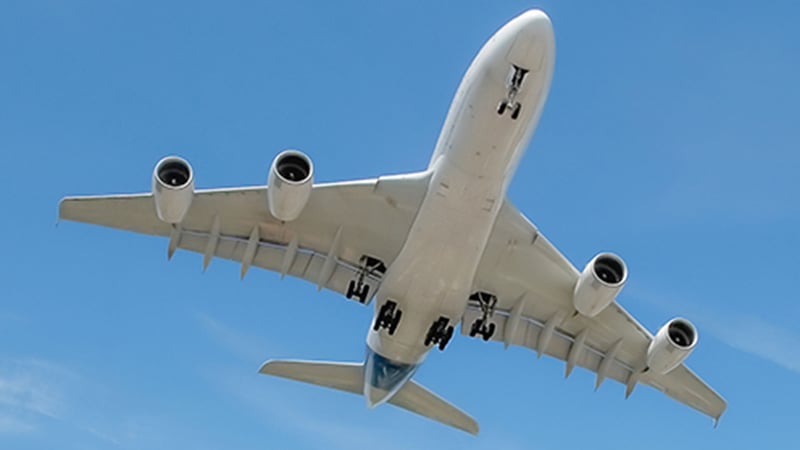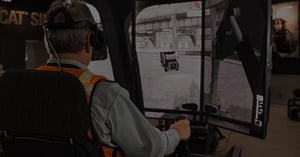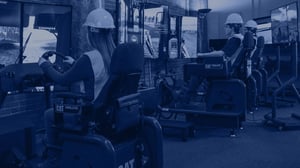Simulators that don’t shake, don’t teach
Modern flight simulators have come a long way. High-resolution visuals, surround sound and sophisticated procedural software have made training more realistic than ever. However, many still lack one essential element: motion.
Without motion, you lose crucial sensory input that real pilots rely on every day:
- Spatial Awareness: There’s no physical feedback when banking, pitching, or yawing, making it harder to internalize aircraft orientation.
- Tactile Cues: The rumble of flaps deploying, the tremors of turbulence, the buzz of engine stress—none of these sensations are present in a static setup.
- Stress Conditioning: When the body isn’t feeling pressure or acceleration, the brain doesn’t release the same physiological responses—like adrenaline or heightened alertness—that are vital in emergency decision-making.
These missing inputs have real consequences. Without motion:
- Pilots may struggle to react appropriately under pressure.
- They miss the chance to anticipate risks through instinct and feel.
- They lose out on building true muscle memory that sticks when it matters most.
Turbulence, in particular, isn’t a malfunction or an inconvenience, but rather a normal part of flight. By integrating motion in the simulation environment, student pilots will require less time training in the air—which is more dangerous and significantly more expensive.
Train like you fly with D-BOX motion
When training meets the body’s natural learning mechanisms, everything clicks faster.
D-BOX’s haptic feedback— which consists of movement, vibration, and texture—engages the brain and body simultaneously. It turns theory into instinct and procedures into muscle memory.
- Motion replicates the forces of flight: takeoff acceleration, steep descents, crosswinds, and sharp banking. It builds spatial awareness and physical intuition.
- Vibration mimics the sensations of engine rumble, light turbulence, gear deployment, and flap retraction—those subtle signals real pilots rely on.
- Texture provides tactile feedback based on surface conditions and impact severity, like the difference between a hard landing on asphalt versus grass.
By combining these three inputs, D-BOX-enabled simulators become multi-sensory environments that is scientifically proven to improve retention and reaction time.
Motion also enables safe exposure to in-flight stress. By introducing turbulence or vibration during routine procedures, new pilots can learn to manage anxiety and build confidence long before they ever step inside a real cockpit.
.png?width=1000&height=667&name=silhouette-team-military-aircraft-flying-over-city%20(1).png)
D-BOX’s full-stack flight solutions
What makes D-BOX stand out isn’t just motion—it is motion tailored for aviation training.
Hardware Built for the Skies
Our G3 haptic system is available in 1.5", 3", and 6" travel options, while our latest system, G5, is available in the 1.5” option, giving integrators the flexibility to match cockpit and cabin setups of all shapes and sizes. Whether you’re outfitting a basic trainer or an advanced full-motion rig, D-BOX hardware scales to fit the mission.
Modular by design, our systems support both full-motion and partial-motion configurations, making them perfect for everything from fixed-base trainers to high-fidelity, potentially FAA/EASA-compliant simulators.
Software That Puts You in Control
Our software suite gives integrators and instructors the tools they need to fine-tune the training experience:
- HaptiSync Center lets instructors adjust motion intensity and feedback in real time—no engineering degree required.
- System Configurator simplifies setup by guiding you step-by-step through the system requirements and hardware mapping process.
- Live Motion SDK enables telemetry-based control of motion in real time
Custom-Coded Scenarios for Precision Training
We know that not every flight scenario can be solved off the shelf. That’s why we offer two flexible coding paths:
- DevSim gives developers complete control to create flight-specific motion profiles for unique aircraft types or mission scenarios.
- CustomSim lets our in-house haptic experts design the motion for you—whether it’s simulating a bumpy landing, violent crosswinds, or a rapid decompression event.
D-BOX is trusted by partners training everyone from private pilots to defense aviation personnel. Whatever your altitude or mission, we’ve got the tools to help your pilots feel prepared.
When the training is realistic, the muscle memory is real
Turbulence teaches pilots to adapt, adjust, and recover quickly. It’s not a malfunction, but rather a critical part of real-world flying. And that means it should be a critical part of simulation, too.
D-BOX delivers a complete haptic ecosystem—hardware, software, and motion coding—designed to bring turbulence, and every other flight challenge, into the training environment. From smooth takeoffs to rocky landings, we help pilots feel it all—so they’re prepared for anything.
Because when the day comes to fly through a storm, it shouldn’t be the first time their seat shakes.

.png?width=1000&height=667&name=silhouette-team-military-aircraft-flying-over-city%20(1).png)


